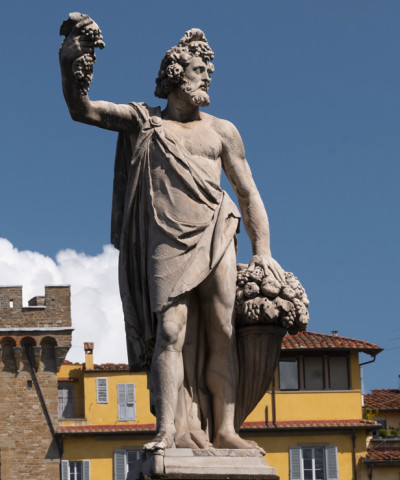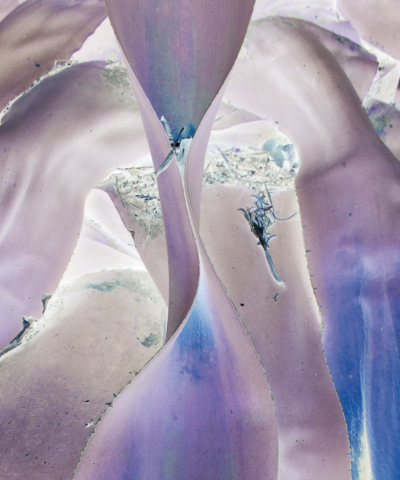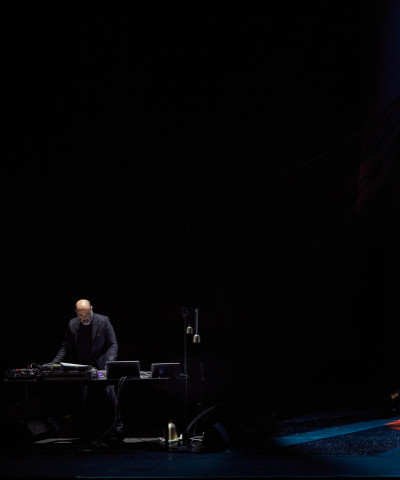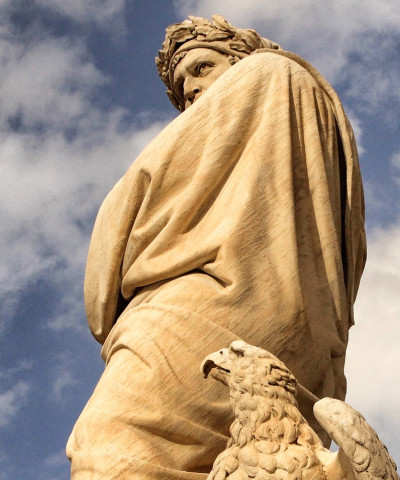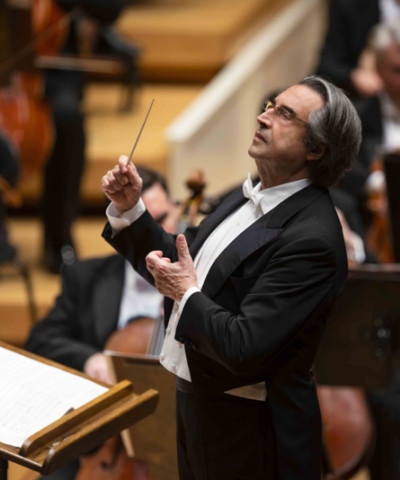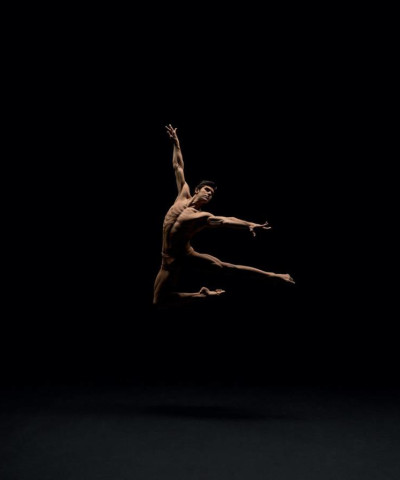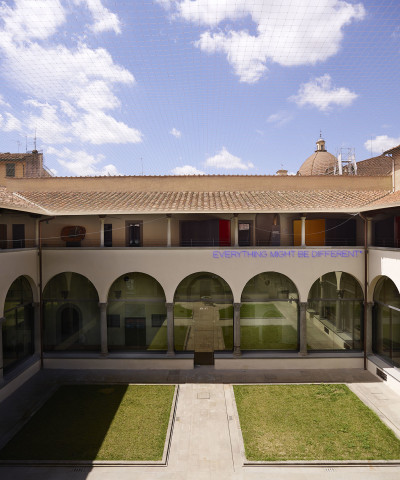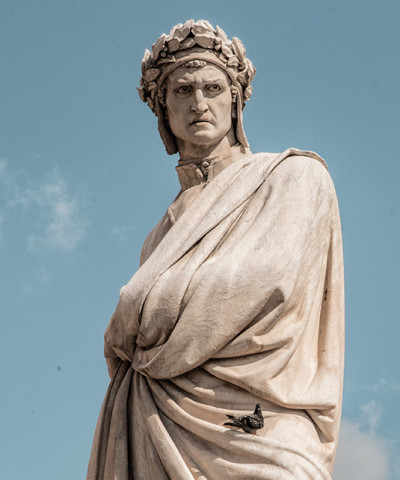How Florence was at the time of Dante
On the trail of the Supreme Poet. Our city seen through the eyes of the father of the Italian language
If Dante were to return to Florence now, he would not only struggle to recognize it, but he would be lost in the all-too-captivated atmosphere. The Florence of messer Durante di Alighiero degli Alighieri, whose 700th anniversary of his death is being celebrated, was a city in great urban ferment. If you want to discover Dante's 10 places in Florence, here instead is our itinerary to discover the poet's most beautiful representations in the city.
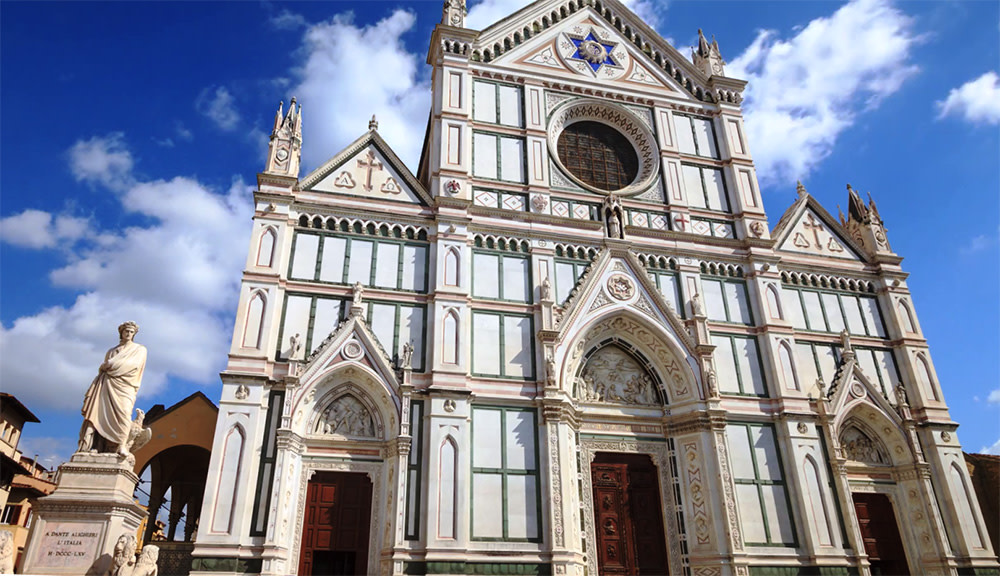 The statue of Dante Alighieri on the steps of the Basilica of Santa Croce
The statue of Dante Alighieri on the steps of the Basilica of Santa CroceAnd, obviously open them in Piazza del Duomo. Actually, in the shade of the Baptistery. One of Dante’s few constants. As a matter of fact, it was identical to today’s, except for the doors, which were made of wood in Dante’s times. It was while talking about his “bel San Giovanni” (lovely St. John’s) that he met the hated Pope Bonifacius VIII, guilty of simony and above all the authority who had him sent into exile. It was probably from the Baptistery that Dante drew inspiration for his Inferno, where Satan gobbles down the damned. And, it is once more in this place that Dante carried out a heroic deed: he saved a baby from drowning in the large baptismal font. Today there is only an outline, but it must have been truly huge and deep. Equally crowded with tombs and sarcophagi was the space extending between the Baptistery and Santa Reparata.
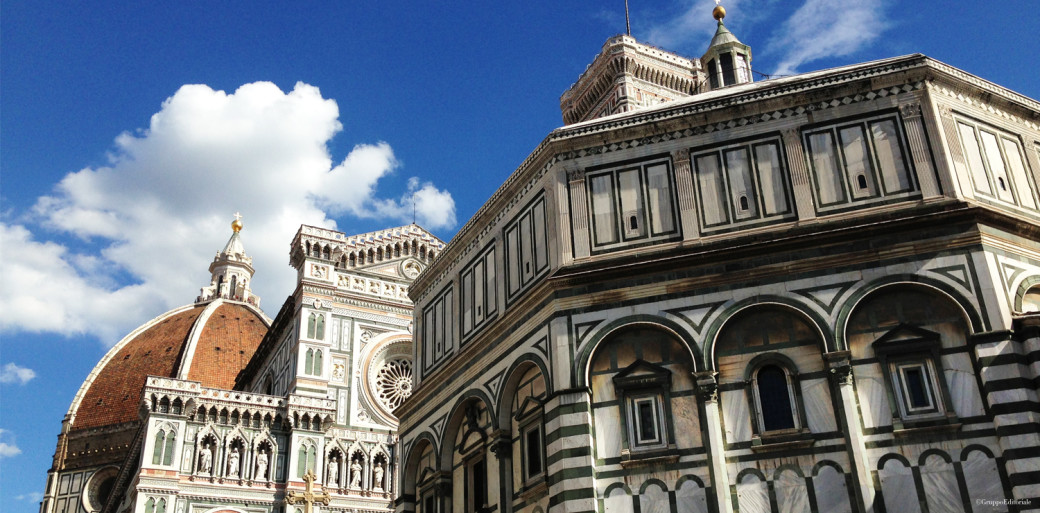 Battistero San Giovanni Firenze
Battistero San Giovanni Firenze Perhaps Dante was able to see the Duomo’s new facade by Arnolfo, but only that. The campanile had not been built before he went into exile in 1301 and the construction of the side of the cathedral had only begun. It could not be completed because the Bischeri properties had not yet been bought (they were later confiscated).
Walking along the narrow streets between Piazza Elisabetta, Via del Corso, and Via Santa Margherita you end up in the middle of Dante’s city. But, Dante would not be able to find his house. In fact, the current Casa di Dante dates from the 20th century, and the Torri dei Giuochi were not the towers in which our poet was born. The house of the Alighieri was apparently situated on Via dei Tavolini-Piazza dei Cimatori and was probably destroyed. Still standing and in very good condition is the Torre della Castagna. Its name, tower of the chestnut, derives from the fact that the priors who closed themselves in it for two months would vote using chestnuts.
 Casa di Dante
Casa di Dante 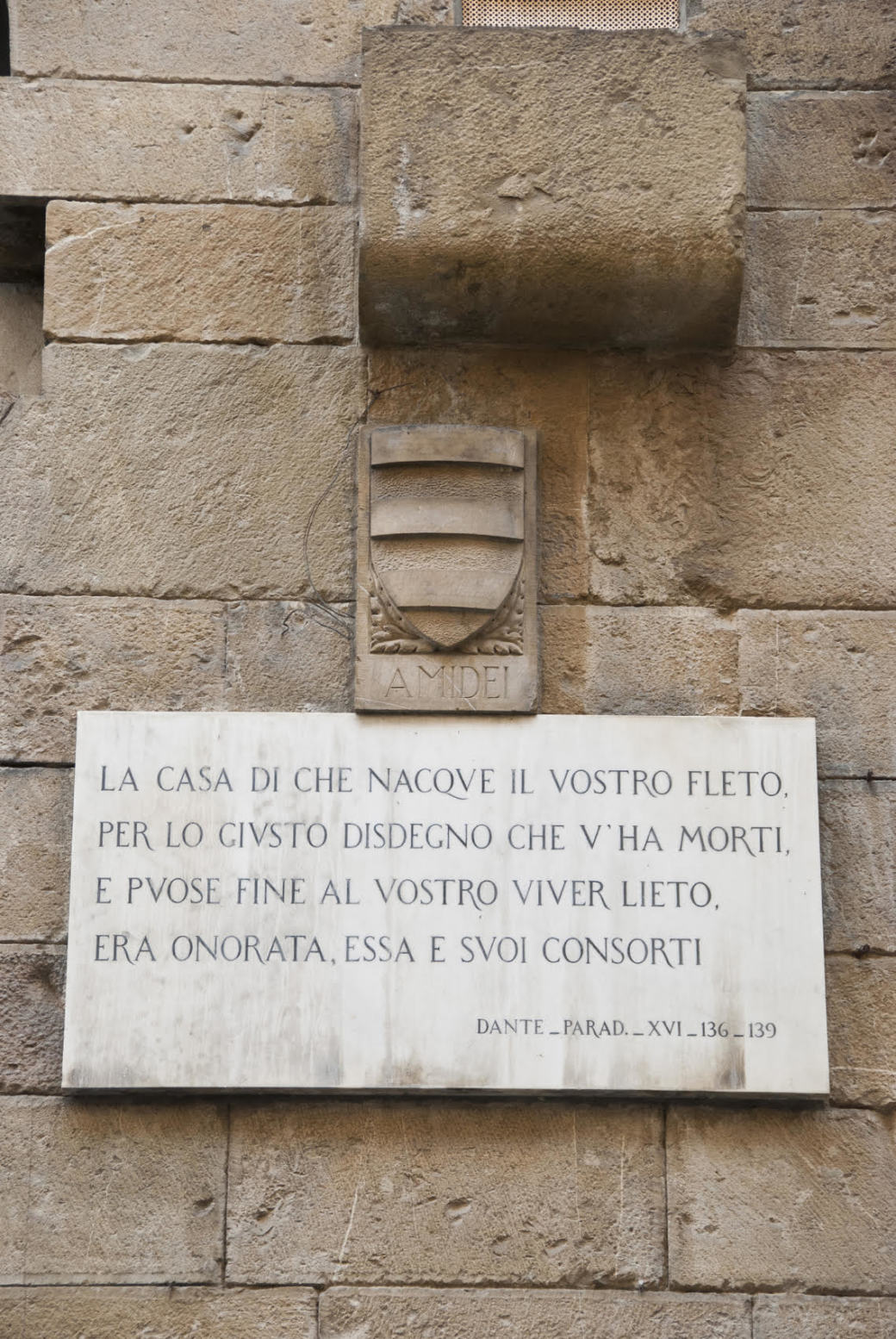 The plaque on the tower
The plaque on the towerHe would also recognize the little church of Santa Margherita de’ Cerchi. The go-between church because here Dante is said to have met Beatrice. And, this is where the beautiful daughter of Folco Portinari is believed to be buried. True or false, it does not matter, considering the great amount of love notes lovers leave each year on the supposed tomb.
Our poet would instead find it difficult to recognize Piazza della Signoria. The reason being that he had seen it with the houses of the Ghibelline family, the Uberti, leveled and a cluster of smaller and larger houses where today the Loggia dei Lanzi stands and against the large church of Santa Cecilia, where we now see Rivoire cafe.
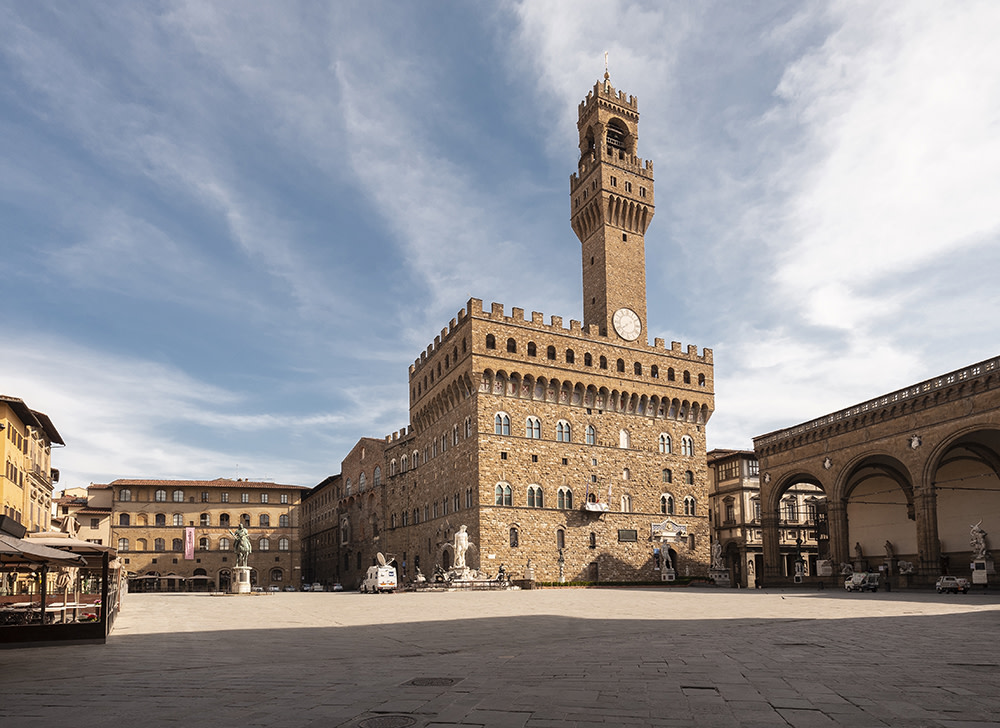 Piazza della Signoria (ph. Lorenzo Cotrozzi)
Piazza della Signoria (ph. Lorenzo Cotrozzi)However, he may have managed to see the first stones of Palazzo Vecchio laid, but he would be stunned to no longer see San Pier Scheraggio. This church, where the priors gathered and discussed during the assembly of the people, was destroyed by Giorgio Vasari; and the pulpit from which Dante spoke as prior is today housed inside the little church of San Leonardo in Arcetri. The old grains market of Dante’s times was not yet under the protection of the trades guild and was only a big porch where bakers who sold grains would gather every evening to sing laud to the little Madonna who had already granted miracles.
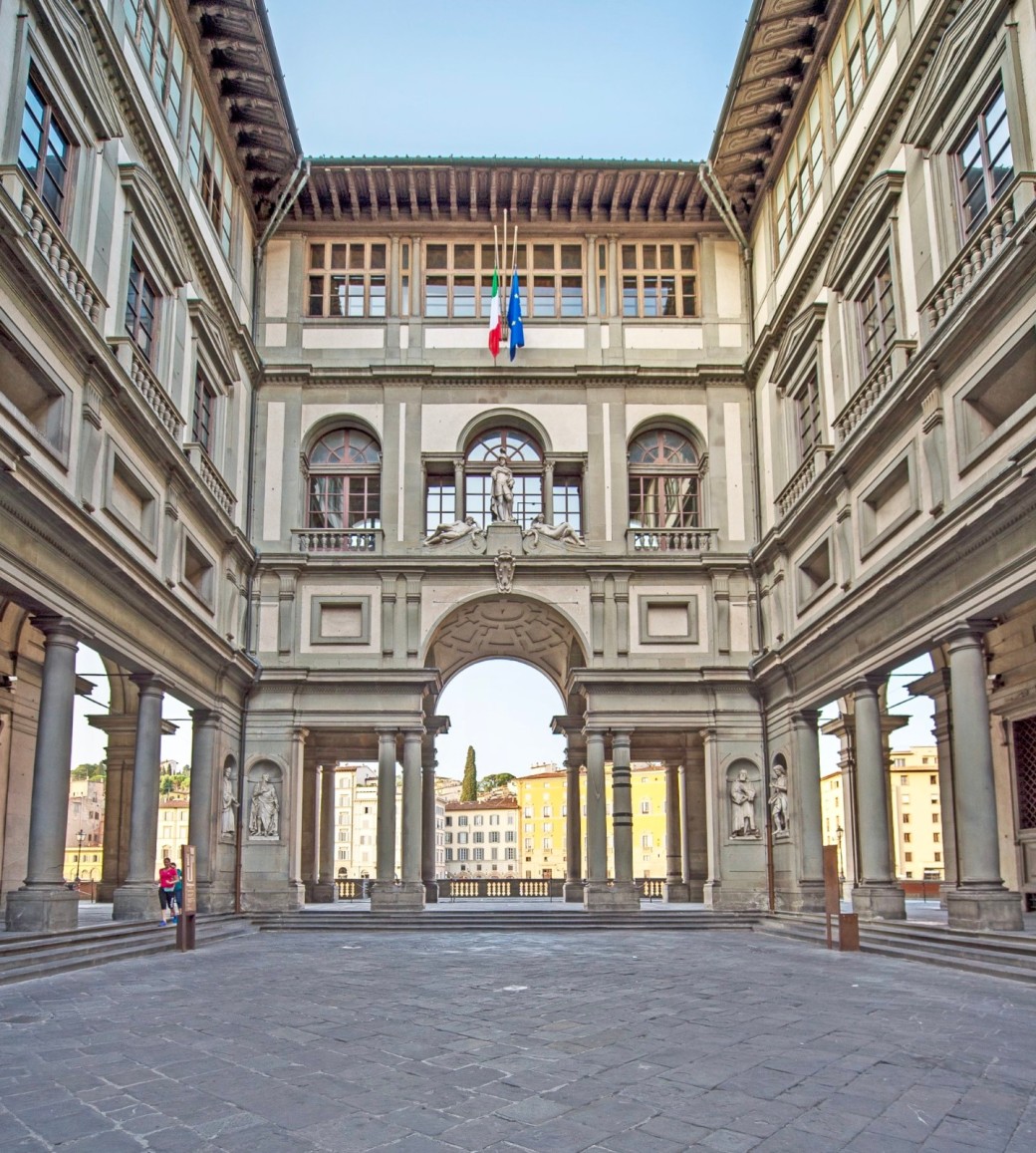 Uffizi Gallery
Uffizi GalleryThe city in which Dante lived was less lit and had open sewers, but it was developing rapidly. It was the productive pulse in Europe’s economy. It was a proud Republic, governed by the Arti, the trade guilds, and Dante became not only its meticulous chronicler but also its severe censor. Cutting and disrespectful, he did not limit himself to sending his friends as enemies to hell. Both the living and the dead, he put them all in that game of nearly-cabalistic symbols (33, the age of Christ and his, repeated three times) and of numbers, which the Divine Comedy represented. It was written in vernacular so that everyone could understand it, even merchants and craftsmen. And, above all, it was Dante who made the Purgatory visible. As expressed by Jacques Le Goff, it was a necessity of the new-born medieval middle-class that needed to earn, at least progressively, a place in Paradise.
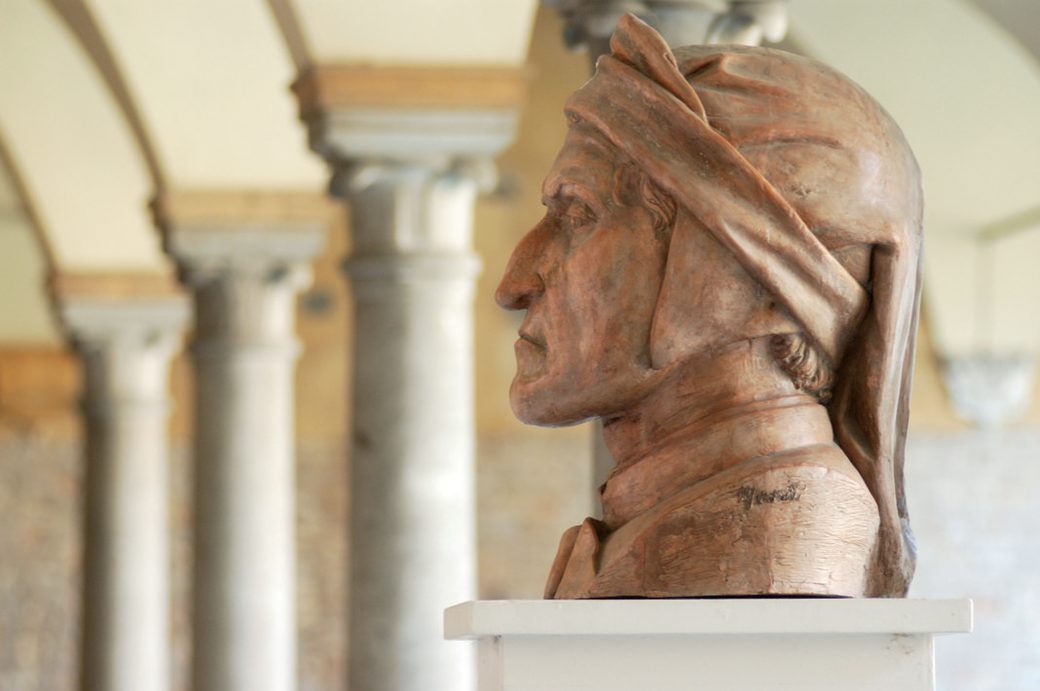 Il busto di Dante
Il busto di Dante









